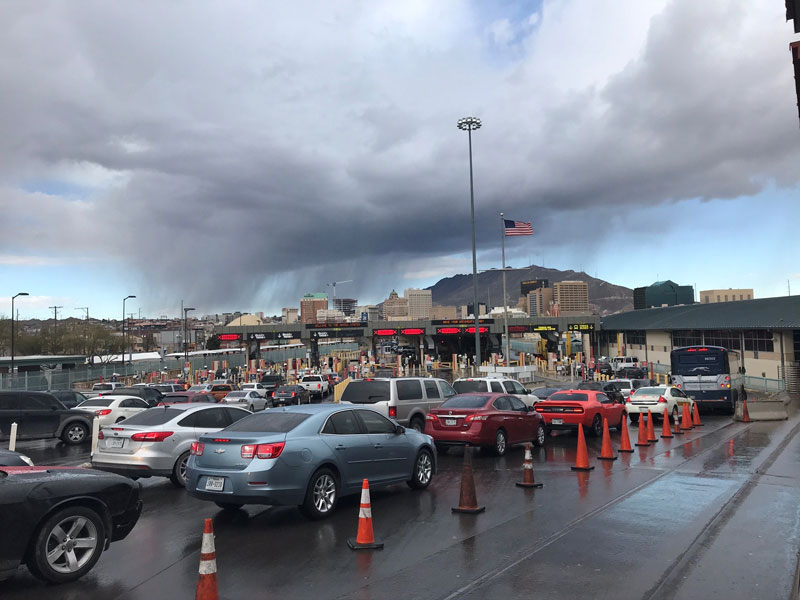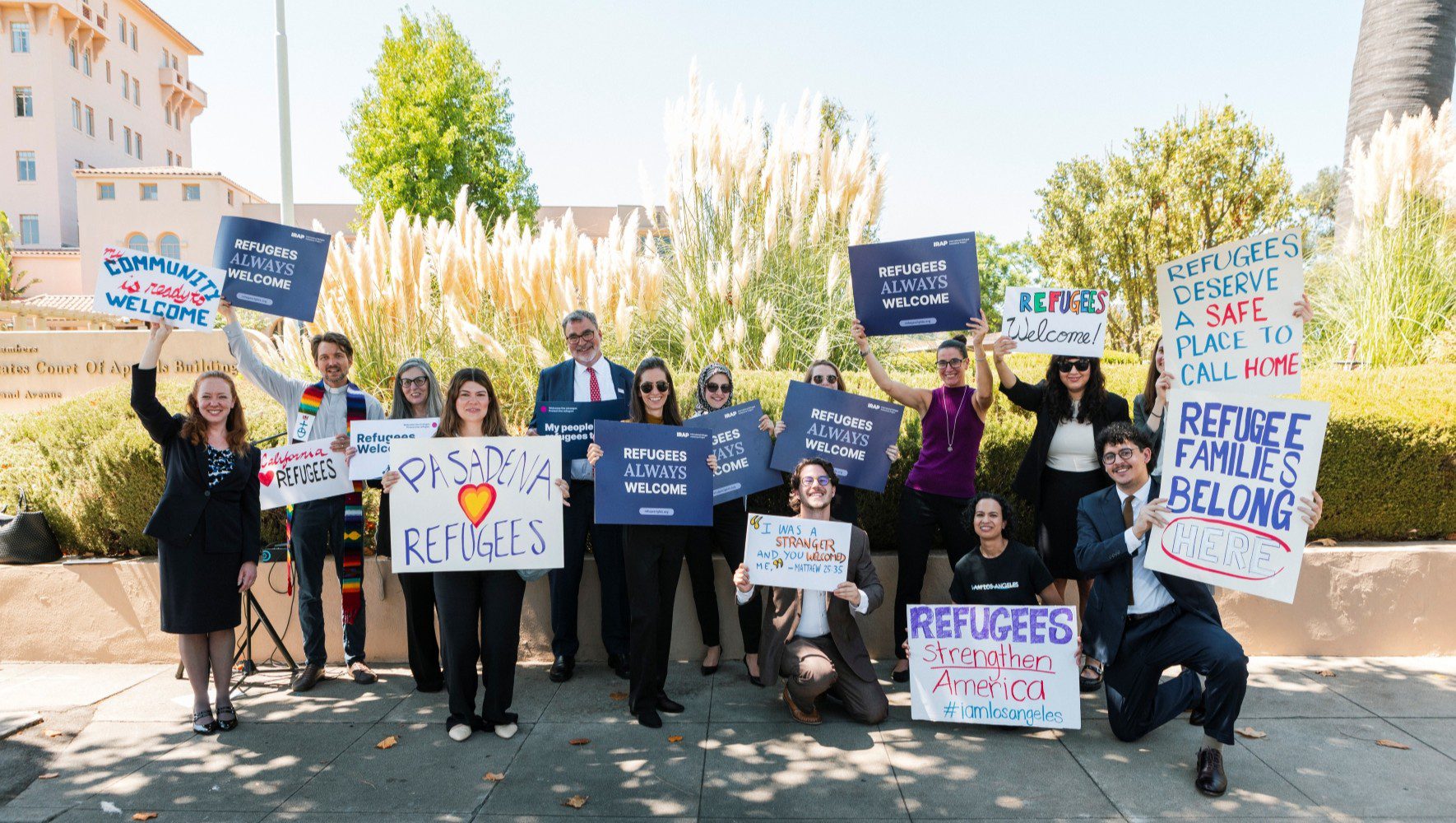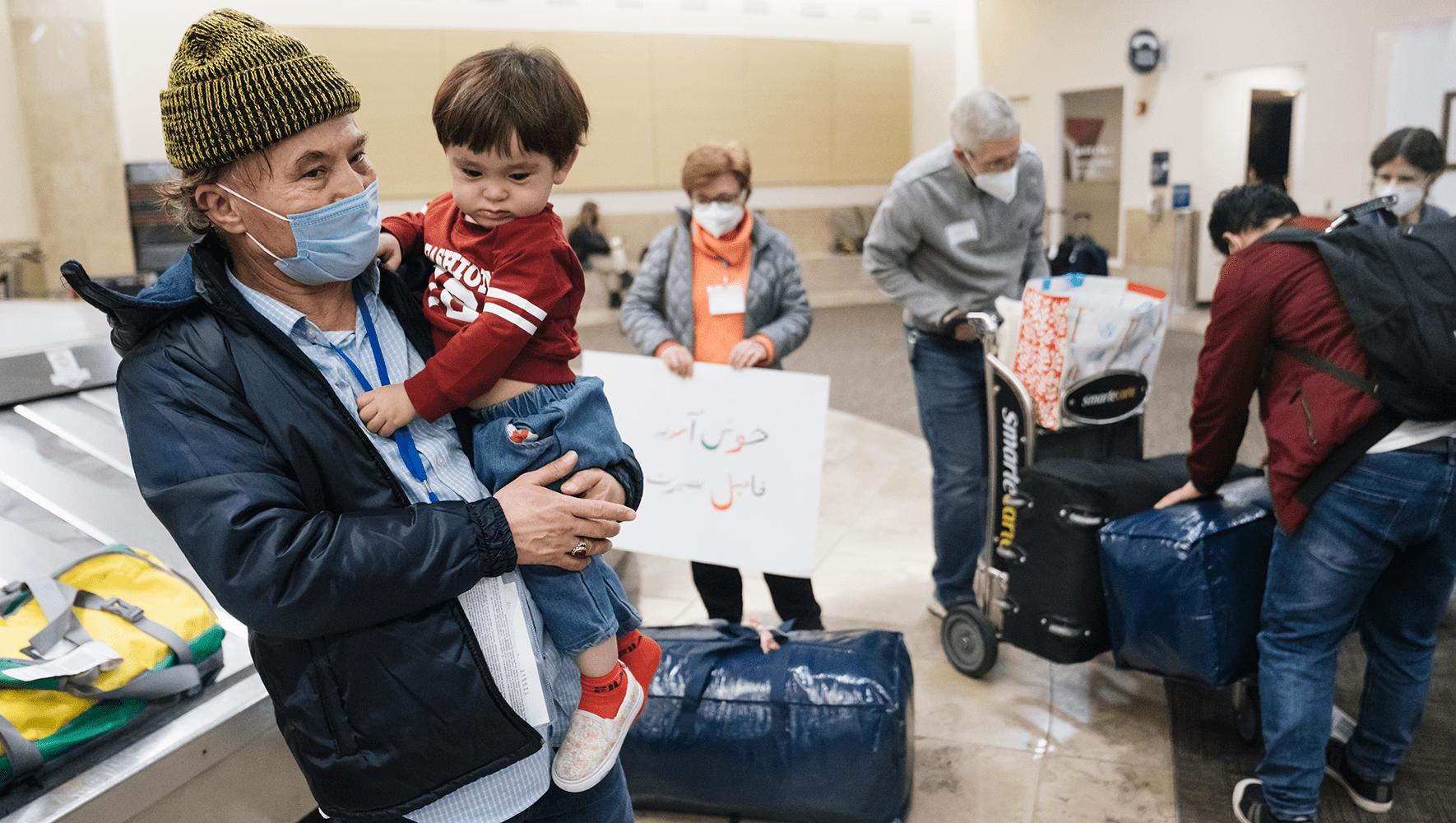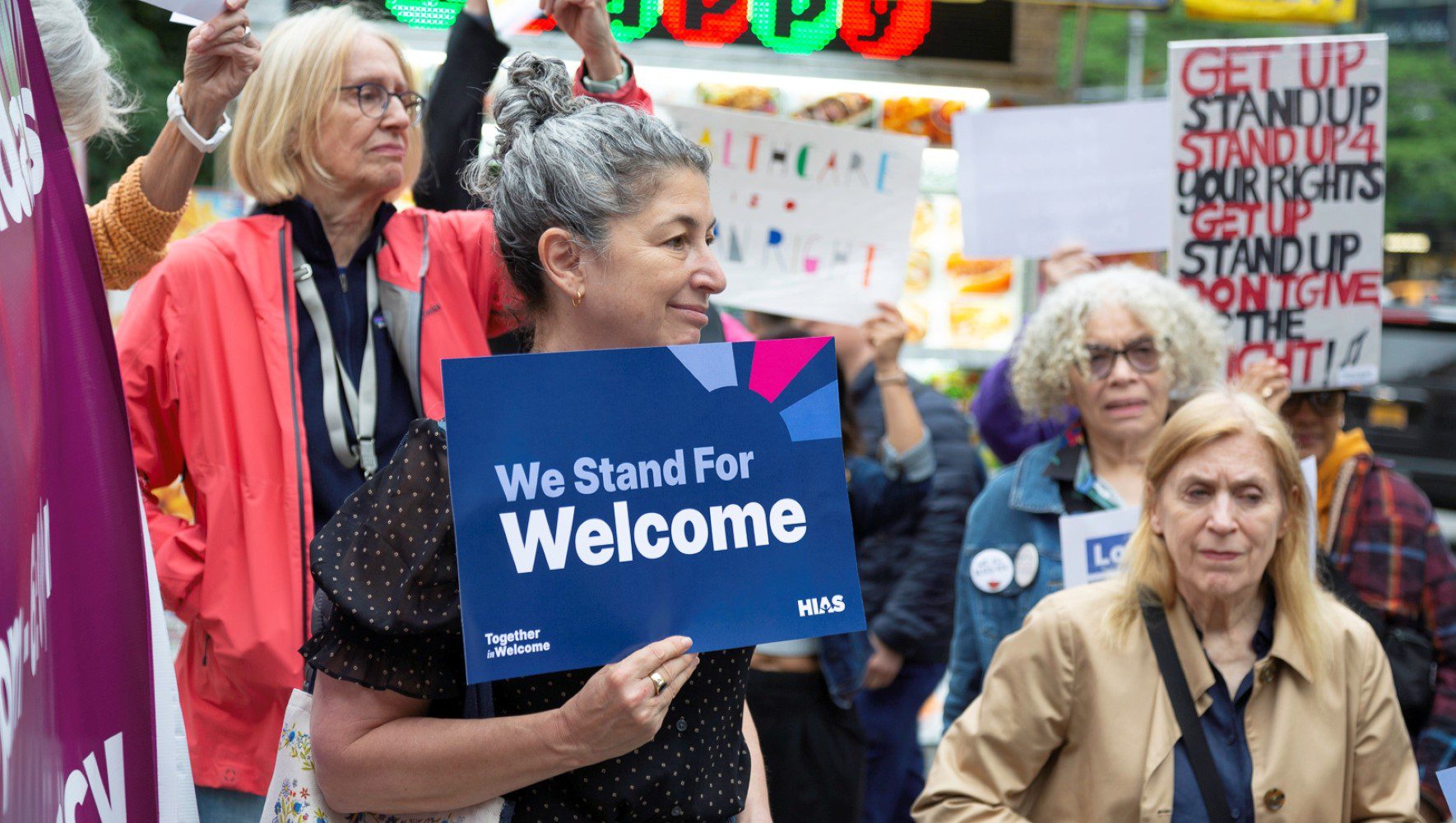Up Close and Personal at the U.S.-Mexico Border
By Jeff Paddock, Volunteer
May 05, 2020

The U.S.-Mexico border crossing, as seen by the author. February 2020.
(Jeff Paddock)
As the pandemic continues to disrupt lives worldwide, asylum seekers at the U.S.-Mexico border are in even more precarious situations than before. HIAS continues to assist asylum seekers as much as possible, but volunteer delegations to the border are on hold. Here, a volunteer who participated in a trip just before the pandemic, recalls his work and the emotional impact of the trip.
A 50-cent toll is all it takes to get into Mexico from the United States — no guards, no passports, nothing. Just walk across the bridge, it’s that easy. But of course for those on the other side trying to come in, it couldn’t be harder.
I volunteered on the HIAS Border Response Team for two weeks in February where my job was to do intake interviews for asylum seekers. The Migrant Protection Protocols (MPP, also known as “Remain in Mexico”) implemented last year pushed Spanish-speakers back into Juarez and put up a huge barrier for immigration lawyers trying to help them. It’s dangerous and time consuming for lawyers to cross into Juarez to screen potential clients. The project I participated in helps gather information about potential clients so that attorneys can best make recommendations and referrals about their cases.
The consultations were designed to answer two questions: Why did you flee your country? And why can’t you stay in Mexico? Completing the paperwork takes about an hour and a half per person. The first page was for personal data, and the next three pages were for stories. And when people told me their stories I noticed their eyes tend to wander.
Many avert their eyes and look down at the table. They pinched things between their fingers, and fiddled with papers, jacket zippers, and strings. And as their tales unfolded, no matter how removed I thought I could be, the air was heavy on our heads. That was when the trauma training, given to us by HIAS, kicked in.
The stories were very real and showed a strong human spirit, whether I was interviewing a Honduran teenager, a Venezuelan opposition party official, an El Salvadoran farmer, a Cuban teacher, or a Guatemalan mother. A few revealed their scars—scars of rape, imprisonment, kidnapping, and torture.
I had a phone screening with an Ecuadorian woman hiding in a border town with her husband and two kids. An ex-husband, an alleged child rapist, was pursuing their children across international lines. She’d sought police protection and restraining orders in every location. Following trainings with HIAS attorneys, I understood that her fight for asylum in the U.S. would be a difficult one. With a heavy heart I told her to be hopeful. Without hope, she’d have nothing.
For some extremely vulnerable populations, I learned that it was possible for lawyers to request that clients be removed from the Remain in Mexico program, and be permitted to enter the U.S. However, many of those individuals would enter the U.S. only to end up in a federal immigration prison.
It felt strange to wish for people to be detained, but detention is something of a win because people will be safer in U.S. holding cells than in Juarez. Even when HIAS’ immigration lawyers select cases that have the best chance of moving forward, it’s a long road: there are court dates and tests of the credibility of their fear (not through a judge, but through a border patrol officer, and often using interpreters who join via telephone). It takes a lot of effort just to be removed from MPP and sent to a detention center in the U.S. to pursue an asylum claim.
When I walked back to the bridge each day, I thought of the estimated 30,000 migrants overwhelming the ad-hoc shelter network in Juarez, and how my team was able to only screen about 50 in two weeks. Even with the help of HIAS’ network of lawyers, the chances for these clients to be granted asylum in the El Paso Immigration Court was less than one in thirty.
My time on the border was short and I did the best I could, but nothing stopped after I left. These events are still happening, and they are happening on our watch.
Where will our eyes wander when we’re forced to recount the trauma we’ve left unattended at the U.S.-Mexico border?
Jeff Paddock studies values-based programming at the Institute of International Humanitarian Affairs.
[[{"fid":"6374","view_mode":"default","fields":{"format":"default","field_file_image_alt_text[und][0][value]":false,"field_file_image_title_text[und][0][value]":false},"type":"media","field_deltas":{"1":{"format":"default","field_file_image_alt_text[und][0][value]":false,"field_file_image_title_text[und][0][value]":false}},"attributes":{"class":"media-element file-default","data-delta":"1"}}]]


